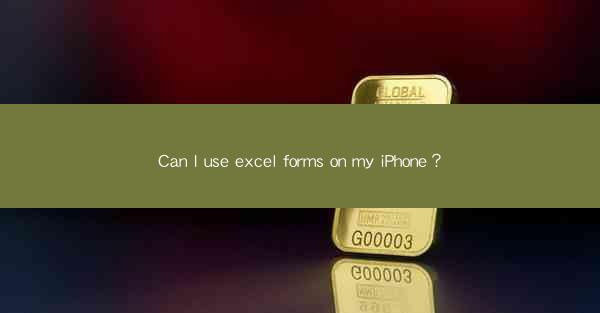
Introduction to Excel Forms on iPhone
Excel forms are a powerful tool for organizing and analyzing data, and they are widely used in various professional and personal contexts. With the increasing popularity of smartphones, many users wonder if they can access and use Excel forms on their iPhone. In this article, we will explore the possibility of using Excel forms on an iPhone and discuss the features and limitations you might encounter.
Excel on iPhone: The Basics
Microsoft Excel is available for iPhone users through the Apple App Store. The Excel app for iPhone offers many of the same features as the desktop version, including the ability to create, edit, and share spreadsheets. However, the interface and functionality are optimized for touch screen use, which can affect the experience of using Excel forms on an iPhone.
Creating Excel Forms on iPhone
1. Open Excel App: Launch the Excel app on your iPhone.
2. New Workbook: Tap on the + button to create a new workbook.
3. Design Form: Use the various tools in Excel to design your form. This includes adding text boxes, checkboxes, dropdown lists, and other form controls.
4. Format Cells: Format the cells to make the form visually appealing and user-friendly.
5. Save and Share: Once your form is ready, save it and share it with others via email, cloud storage, or other sharing options.
Using Excel Forms on iPhone
1. Accessing Forms: To use an Excel form on your iPhone, you need to have the form file available on your device or accessible through cloud storage services like OneDrive or Dropbox.
2. Opening the Form: Open the Excel app and navigate to the location where your form is stored.
3. Entering Data: Tap on the form controls to enter data. The touch screen interface allows for easy navigation and data entry.
4. Navigating Between Cells: Use the arrow keys or swipe gestures to navigate between cells and move through the form.
5. Saving Changes: After entering data, make sure to save your changes to the form.
Limitations of Excel Forms on iPhone
1. Complexity: Some Excel forms may be too complex to be effectively used on a small screen. This includes forms with multiple layers of data validation or intricate formulas.
2. Touch Screen Limitations: The touch screen interface can sometimes be less precise than a mouse or trackpad, which might affect the accuracy of data entry.
3. Performance: On older or less powerful iPhones, running Excel forms might be slower than on a desktop or laptop computer.
Alternatives to Excel Forms on iPhone
If Excel forms are not suitable for your needs on an iPhone, there are alternative options you can consider:
1. Microsoft Forms: Microsoft Forms is a web-based form creation tool that can be accessed on any device with a web browser.
2. Google Forms: Google Forms is another web-based form creation tool that offers similar functionality to Excel forms and is accessible on any device with an internet connection.
3. Third-Party Form Apps: There are several third-party form creation apps available on the App Store that offer unique features and may be more suitable for certain use cases.
Conclusion
While it is possible to use Excel forms on an iPhone, there are limitations to consider. The Excel app for iPhone provides a good range of features for creating and using forms, but the touch screen interface and performance constraints may not be ideal for all types of forms. Users should evaluate their specific needs and consider alternative solutions if necessary.











